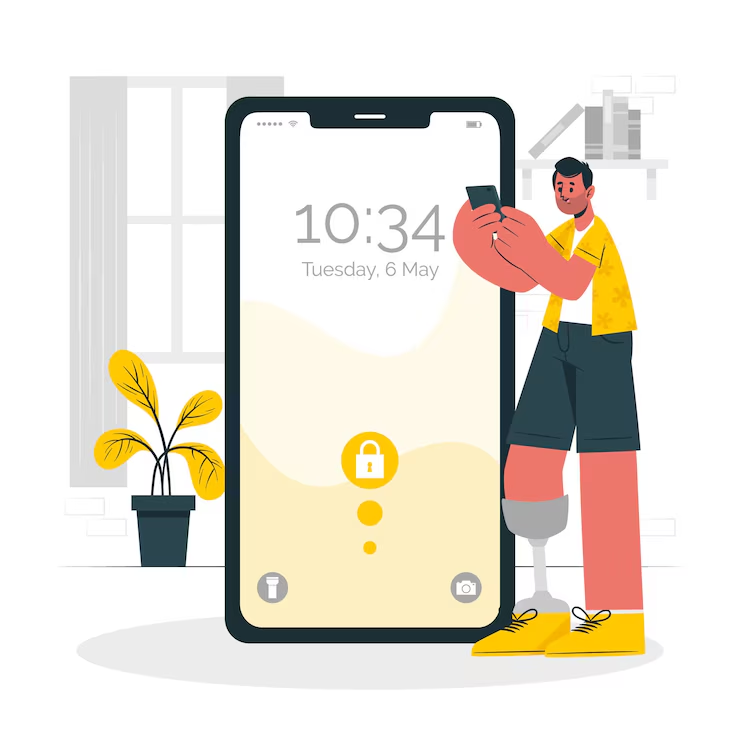
In today’s digital age, security is paramount, and One-Time Passwords (OTPs) play a crucial role in safeguarding sensitive information. OTPs are dynamic security codes used to authenticate a user’s identity, ensuring that online transactions and logins are secure. This comprehensive article explores OTP numbers in detail, including their definition, functionality, benefits, and implementation, to provide a thorough understanding of this essential security feature.
What is an OTP Number?
An OTP (One-Time Password) is a unique, temporary password used to verify a user’s identity during a login or transaction process. Unlike traditional static passwords, which remain the same until changed by the user, OTPs are designed to be used only once and expire after a short period. This dynamic approach significantly enhances security by mitigating risks associated with password theft and unauthorized access.
Key Characteristics of OTPs
- Uniqueness: Each OTP is generated uniquely for a specific session or transaction, ensuring that it cannot be reused.
- Temporary Validity: OTPs are valid for a limited time, typically ranging from 30 seconds to a few minutes, after which they expire.
- Dynamic Generation: OTPs are generated dynamically using algorithms, making them unpredictable and resistant to interception.
How OTP Numbers Work
The OTP system involves several key processes to ensure secure authentication:
1. Generation of OTP Numbers
The process of generating OTP numbers involves creating a unique code that is valid for a single use. This process generally includes:
- Algorithms: OTPs are generated using algorithms such as HMAC-based One-Time Password (HOTP) and Time-based One-Time Password (TOTP). HOTP uses a counter-based approach, where the OTP is generated based on a counter value. TOTP, on the other hand, relies on the current time to generate a time-based OTP.
- Length and Complexity: OTPs are typically 6 to 8 digits long. The length and complexity are designed to balance security and usability. Longer OTPs offer greater security but may be harder for users to enter.
- Encoding and Transmission: The OTP is encoded and transmitted to the user through secure channels, such as SMS, email, or an authenticator app.
2. Delivery of OTP Numbers
Once generated, OTPs are delivered to users through various methods:
- SMS: The OTP is sent as a text message to the user’s registered mobile phone number. This method is widely used due to its accessibility.
- Email: The OTP can be sent to the user’s registered email address. This method is commonly used for online services where users prefer email communication.
- Authenticator Apps: OTPs can also be generated by authenticator apps like Google Authenticator or Authy. These apps use TOTP algorithms to generate time-based OTPs that are displayed on the user’s device.
3. User Input and Verification
The user receives the OTP and enters it into the designated field on the website or application. The verification process involves:
- Input Field: The OTP input field should be user-friendly and designed to accept the OTP code securely.
- Validation: The system checks the entered OTP against the one stored on the server. This involves verifying the OTP’s correctness and ensuring it has not expired.
- Access Granting: Upon successful validation, the user is granted access to the requested service or transaction. If the OTP is invalid or expired, the system prompts the user to request a new one.
Benefits of Using OTP Numbers
OTPs offer several advantages, making them an essential component of modern authentication systems:
1. Enhanced Security
- Reduction in Password Theft: OTPs help reduce the risk of password theft by providing a unique code for each transaction or session. Even if a password is compromised, an OTP adds an additional layer of security.
- Protection Against Phishing: Since OTPs are valid only for a short period and for a single use, they are less susceptible to phishing attacks compared to static passwords.
- Prevention of Replay Attacks: The temporary nature of OTPs prevents replay attacks, where intercepted passwords are reused to gain unauthorized access.

2. User Convenience
- Ease of Use: OTPs are easy for users to use and understand. They receive the OTP via SMS, email, or an app and enter it to authenticate their identity.
- Integration with Existing Systems: OTPs can be integrated into existing authentication systems without requiring major changes to the infrastructure.
3. Regulatory Compliance
- Adherence to Standards: Many industry standards and regulatory frameworks require the use of OTPs for secure transactions and data protection. Implementing OTPs helps organizations comply with these regulations.
Implementation of OTP Systems
Implementing an OTP system involves several key considerations:
1. Selecting the Right Algorithm
- HOTP vs. TOTP: Organizations must choose between HOTP and TOTP based on their specific needs. HOTP is suitable for systems that require counter-based OTPs, while TOTP is ideal for time-based authentication.
2. Secure Transmission
- Encryption: OTPs should be encrypted during transmission to prevent interception and unauthorized access.
- Delivery Channels: Use secure channels such as SMS, email, or authenticator apps to deliver OTPs to users.
3. User Experience
- Design of Input Fields: The OTP input fields should be designed to minimize errors and enhance user experience. Clear instructions and error messages can help users enter the OTP correctly.
- Expiration Management: Implement systems to handle OTP expiration gracefully, allowing users to request new OTPs if needed.
4. Security Measures
- Rate Limiting: Implement rate limiting to prevent brute-force attacks on OTP input fields. This restricts the number of attempts a user can make within a specified time frame.
- Monitoring and Logging: Monitor OTP usage and maintain logs to detect and respond to potential security threats.
Common Issues and Solutions
Despite their benefits, OTP systems can encounter challenges. Here are some common issues and their solutions:
1. Delivery Delays
- Issue: Users may experience delays in receiving OTPs via SMS or email.
- Solution: Optimize messaging infrastructure and offer alternative delivery methods, such as in-app notifications.
2. Expired OTPs
- Issue: Users may encounter expired OTPs if they take too long to enter the code.
- Solution: The system should provide an option to request a new OTP and offer clear instructions on the expiration time.
3. User Errors
- Issue: Users may accidentally enter incorrect OTPs or face issues with input fields.
- Solution: Ensure that OTP input fields are user-friendly and provide helpful error messages to guide users through the process.
Conclusion
One-Time Passwords (OTPs) are a vital component of modern digital security systems. By providing a unique, temporary code for each transaction or session, OTPs enhance security and protect against unauthorized access. Their implementation involves generating, delivering, and verifying OTPs while addressing challenges such as delivery delays and user errors. As technology continues to evolve, OTPs remain a crucial tool in safeguarding sensitive information and ensuring secure digital interactions. Understanding OTPs and their functionality is essential for both users and organizations to maintain robust security measures in an increasingly connected world.

2 thoughts on “Otp Number Bataiye”